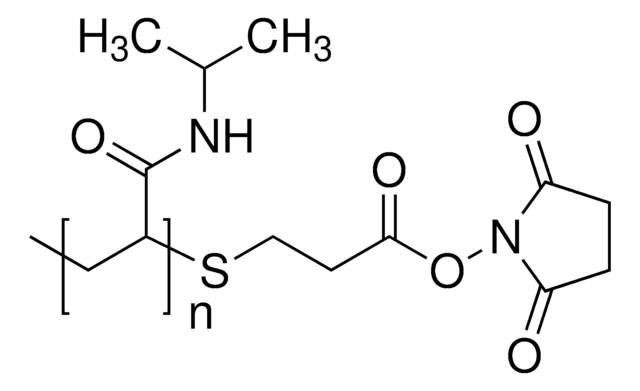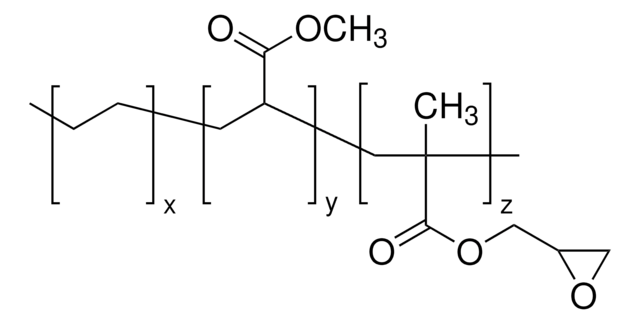724858
Poly(N-isopropylacrylamide-co-methacrylic acid)
methacrylic acid 10 mol %, Mn 60,000
Sinónimos:
Poly(NIPAM-co-MAA), Polyacrylamide, functionalized polyNIPAM, functionalized polyacrylamide, polyNIPAM
About This Item
Productos recomendados
form
solid
Quality Level
mol wt
Mn 60,000
composition
methacrylic acid, 10 mol %
mp
>300 °C
Mw/Mn
≤2.5
InChI
1S/C6H11NO.C4H6O2/c1-4-6(8)7-5(2)3;1-3(2)4(5)6/h4-5H,1H2,2-3H3,(H,7,8);1H2,2H3,(H,5,6)
InChI key
BGJOTKHBFYMJST-UHFFFAOYSA-N
¿Está buscando productos similares? Visita Guía de comparación de productos
Application
Storage Class
11 - Combustible Solids
wgk_germany
WGK 3
flash_point_f
Not applicable
flash_point_c
Not applicable
Elija entre una de las versiones más recientes:
Certificados de análisis (COA)
¿No ve la versión correcta?
Si necesita una versión concreta, puede buscar un certificado específico por el número de lote.
¿Ya tiene este producto?
Encuentre la documentación para los productos que ha comprado recientemente en la Biblioteca de documentos.
Artículos
Poly(N-isopropylacrylamide), or PNIPAM, is a stimuli-responsive polymer that responds to changes in pH and temperature and has a LCST around 32 C.
Tissue engineering has become a key therapeutic tool in the treatment of damaged or diseased organs and tissues, such as blood vessels and urinary bladders.
By altering the physicochemical properties, smart or intelligent drug delivery systems can be designed to deliver therapeutic molecules on-demand. Learn more about the application of stimuli-responsive materials in drug delivery.
Professor Mitsuhiro Ebara provides insights on several types of smart nanofiber mesh systems that have been explored for different drug delivery purposes.
Nuestro equipo de científicos tiene experiencia en todas las áreas de investigación: Ciencias de la vida, Ciencia de los materiales, Síntesis química, Cromatografía, Analítica y muchas otras.
Póngase en contacto con el Servicio técnico





